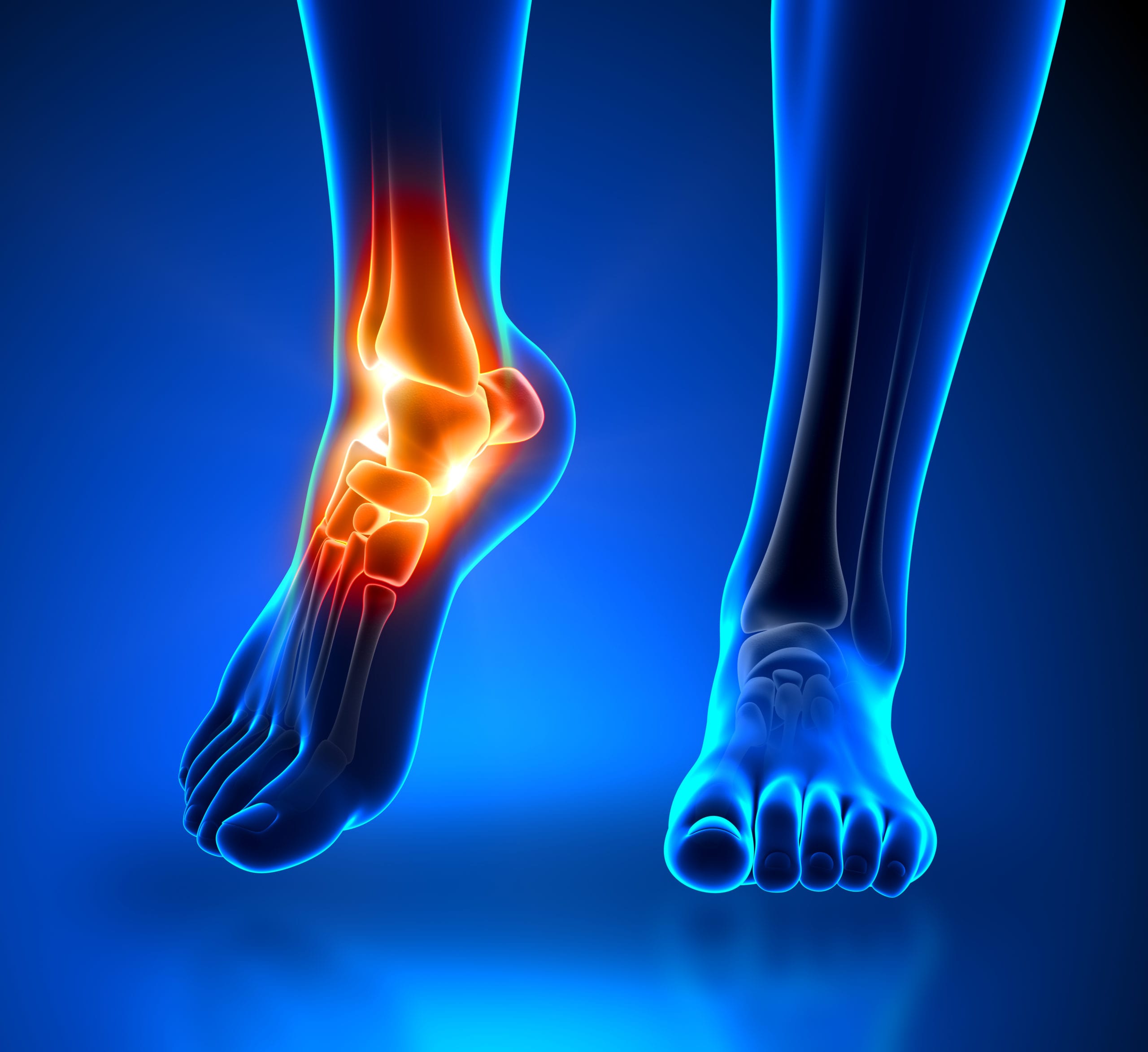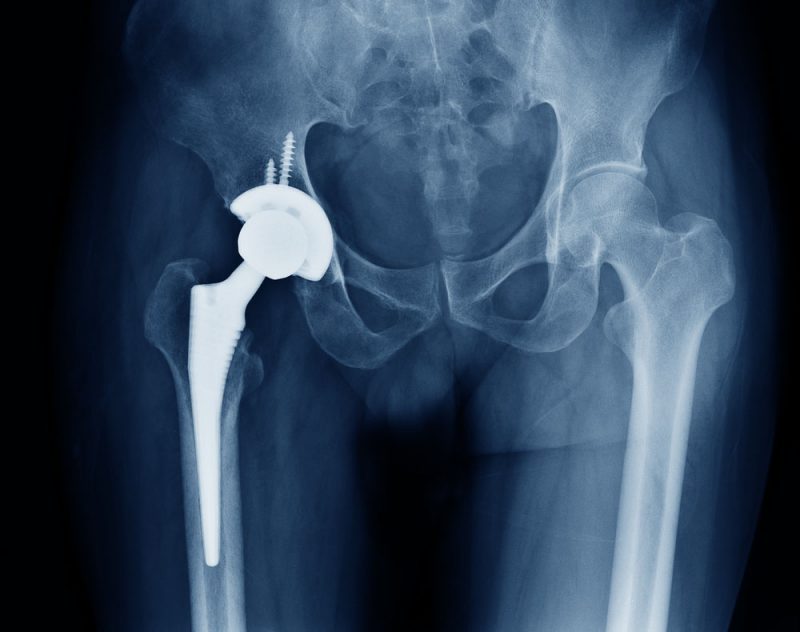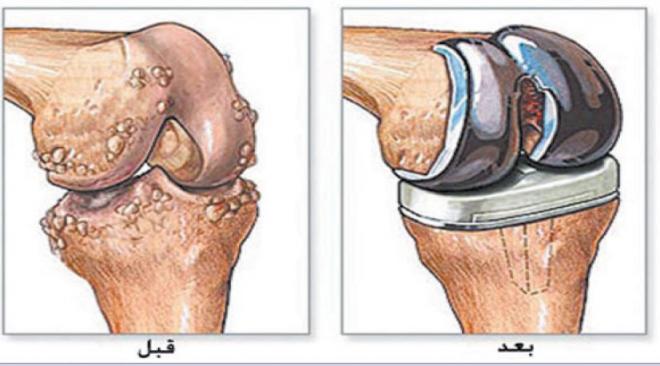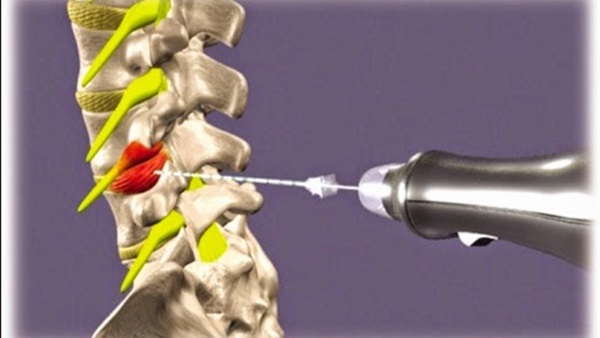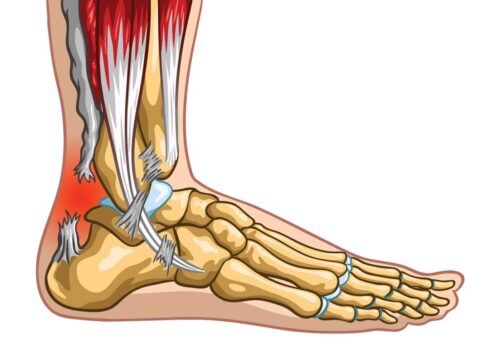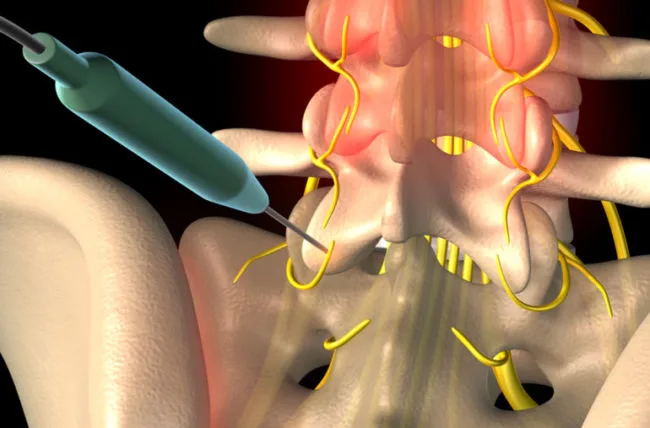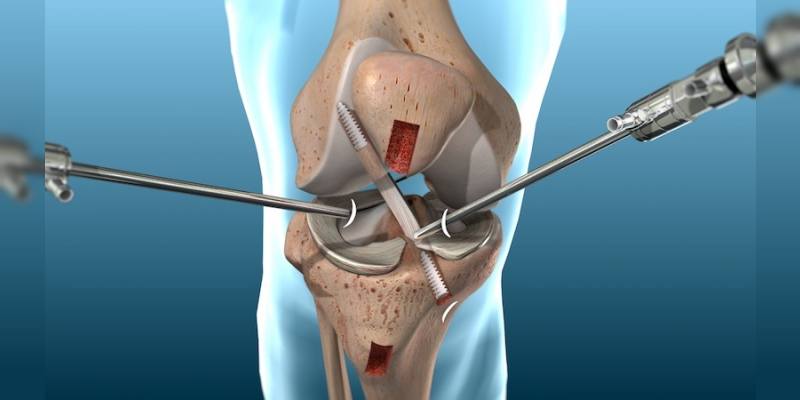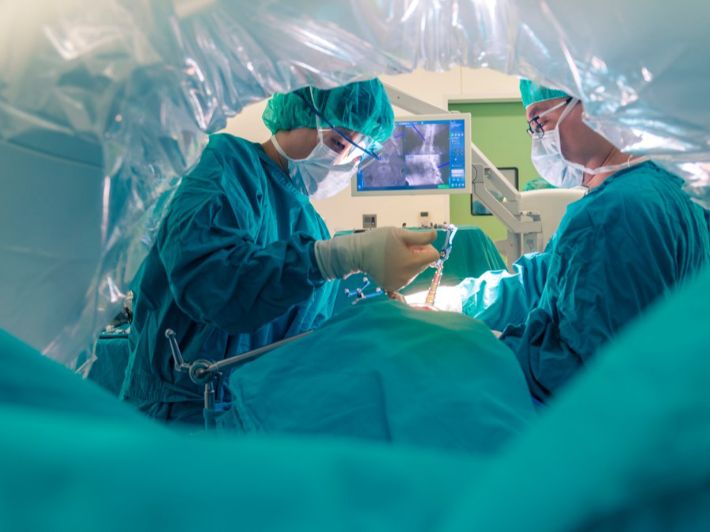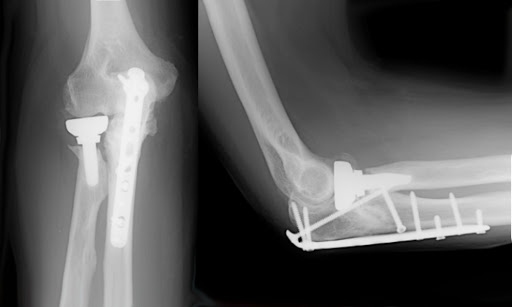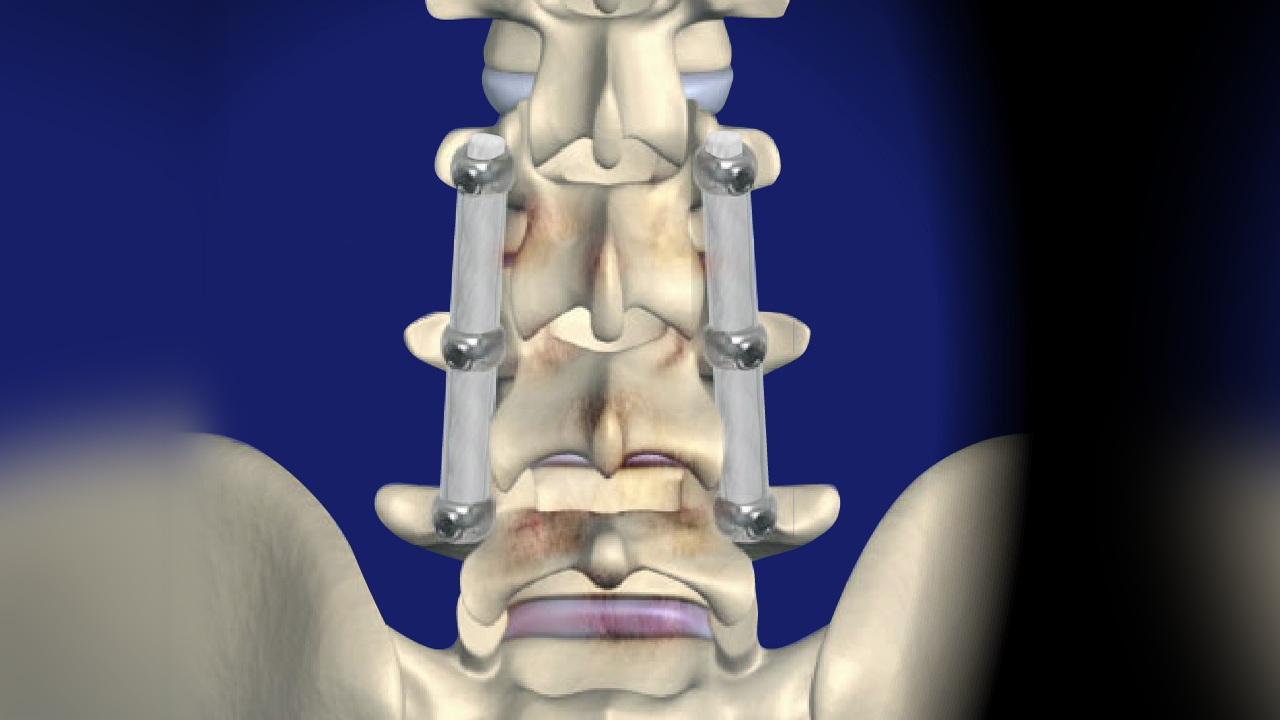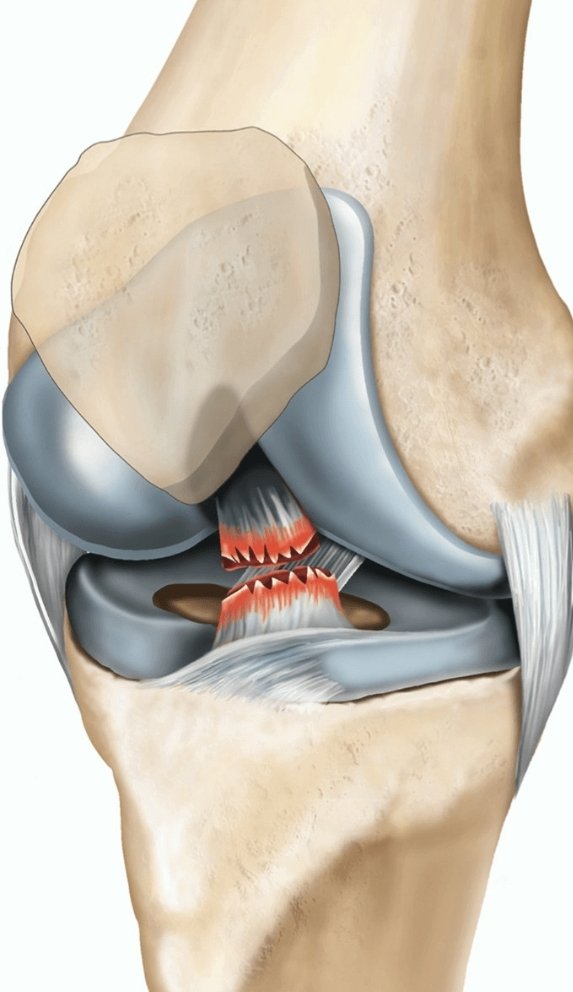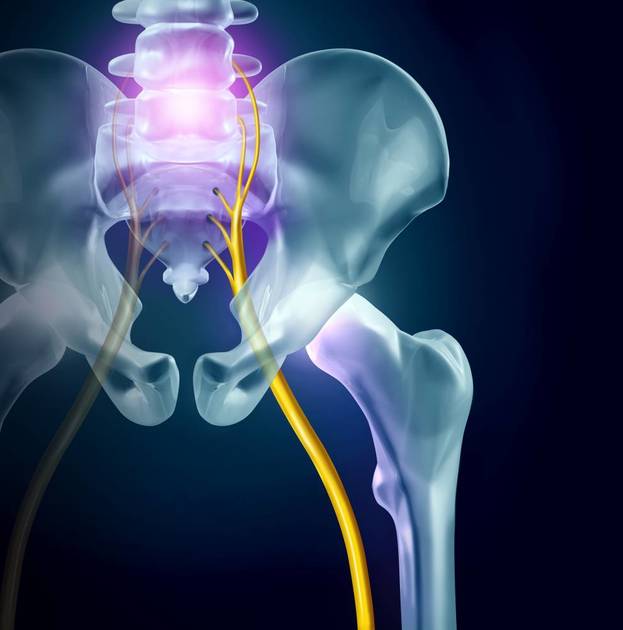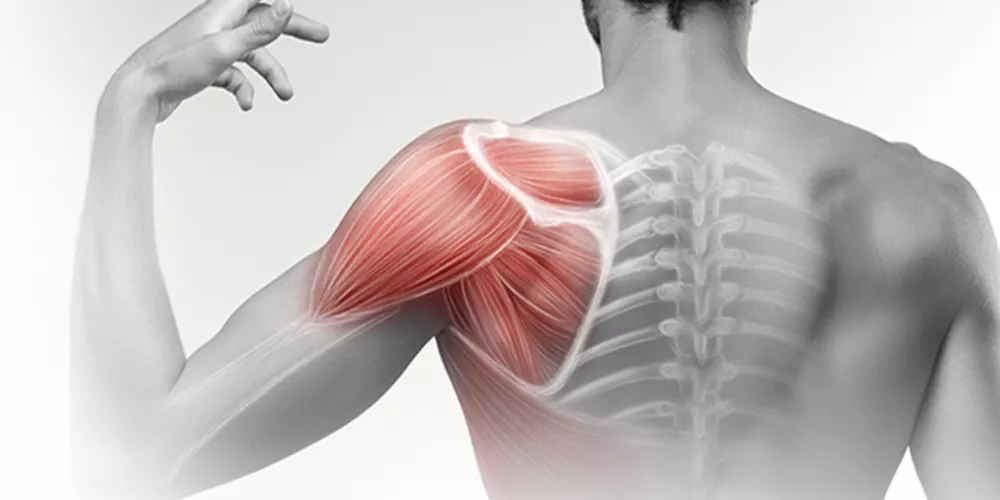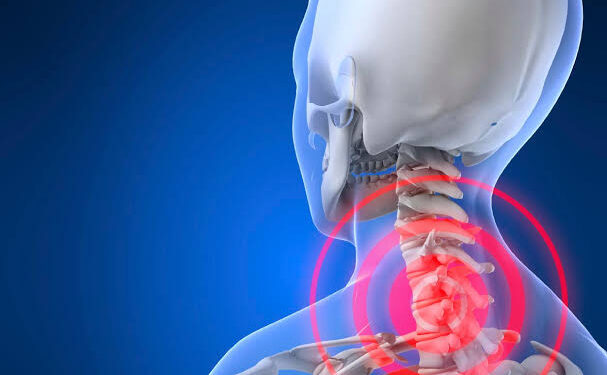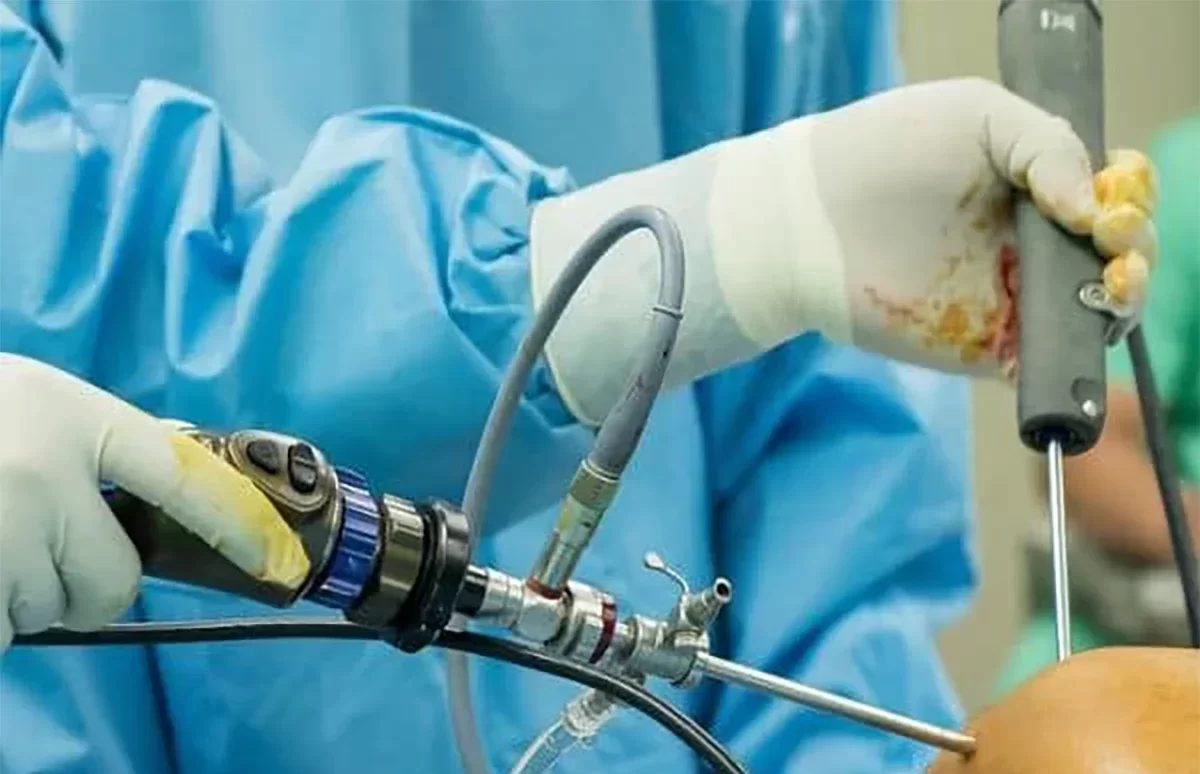Elbow Plate and Screw Installation Procedure
Elbow Plate and Screw Installation Procedure, Are you experiencing pain, disability, and an inability to perform your daily tasks due to elbow damage? Don’t worry, the procedure of installing a plate and screws in the elbow could be a solution that rids you of joint pain and allows you to return to your daily life with ease. In this article, we will discuss the steps of the procedure and the most important notes to consider post-surgery to avoid complications and maintain elbow safety. Let’s discover together how this procedure can transform your life from suffering to comfort once again.

Elbow Plate and Screw Installation Procedure
This surgical procedure is used to fix elbow fractures, helping to reduce pain, improve movement, and enhance the healing process. The installation of a plate and screws in the elbow works to alleviate pain and promote recovery.
This surgical procedure aims to provide support and stabilization for bones that have been fractured or injured at the elbow joint. Therefore, a plate and screws are installed in the fractured part to help the bones heal and return to their normal position.
Enjoy specialized and personal care from Dr. Amr Amal, who combines practical experience and scientific knowledge in the field of elbow surgeries.
How to Diagnose Elbow Fractures
There are various types of fractures that can occur in the bone, including open or closed, complete or partial. Fractures can be diagnosed through a clinical examination first to identify the symptoms felt by the patient and to check for swelling, bleeding, or deformities in the bones or surrounding area.
The doctor will then request imaging using X-rays or MRI to get a complete picture of the condition of the bones and tissues, especially in the case of displaced wounds that could affect the muscles around the bone.

Indications for Elbow Joint Surgery
When someone suffers from pain in the elbow joint and is unable to perform daily activities normally, it becomes very necessary to undergo elbow joint surgery. Medical experts suggest that common reasons for undergoing this procedure include:
- The occurrence of arthritis, such as rheumatoid arthritis.
- Damage to soft tissues.
- Severe fractures in the elbow joint.
- Exposure to clots and accidents resulting in joint injury.
- It is also suitable for those suffering from bone ulcers or significant erosion.
- Additionally, if other treatments are ineffective.
Furthermore, this surgical procedure is conducted for anyone wishing to restore their normal movement and return to their daily life after an elbow injury. Medical reports indicate that the success rate of this procedure exceeds 90% in most cases. As it is a surgical procedure that requires high medical expertise, it is advised to consult a specialist doctor in case of any pain in the elbow joint.
Indications for Undergoing Elbow Joint Surgery
When an individual suffers from pain in the elbow joint and is unable to perform their daily activities normally, it becomes very necessary to undergo elbow joint surgery. Medical experts indicate that the common reasons for undergoing this procedure include the following:
- Occurrence of arthritis, such as rheumatoid arthritis.
- Presence of soft tissue damage.
- Severe fractures in the elbow joint.
- Exposure to clots and accidents resulting in joint injury.
- It is also suitable for individuals suffering from significant bone ulceration or erosion.
- Additionally, if other treatments have been ineffective.
Moreover, this surgical procedure is performed for anyone wishing to restore their normal movement and return to their daily life after an elbow injury. Medical reports indicate that the success rate of this operation exceeds 90% in most cases. Given that it is a surgical procedure requiring high medical expertise, it is advised to consult a specialist doctor if any pain in the elbow joint is experienced.

Preoperative Procedures for Elbow Joint Surgery
Before undergoing elbow joint surgery for the installation of plates and screws, there are several important procedures that must be taken to ensure the patient is ready for surgery. These procedures include:
- Accurate diagnosis of the condition, requiring a comprehensive examination of the elbow using X-rays and magnetic resonance imaging (MRI) to determine the extent of joint damage and the size of the plates needed for repair.
- Psychological preparation for the surgery, as joint operations are precise surgeries that may take a long time for the wound to heal and for full recovery. Therefore, the patient needs to be psychologically prepared and seek advice from doctors and specialized professionals.
- Discontinuing certain medications that may increase blood bleeding (blood thinners), such as aspirin and herbal treatments, several days before the surgery date.
- Conducting necessary tests to ensure the overall health of the patient, such as blood tests and heart examinations.
- Refraining from eating and drinking for 8 hours before the surgery, according to the doctor’s instructions.
- Receiving advice from the doctor on how to care for the wound and reduce potential risks after surgery.
Preoperative procedures for elbow joint surgery are of great importance as they reduce potential risks and prepare the patient for a quick recovery phase, helping them regain their normal movement and activity. It is crucial for the patient to carefully follow the doctor’s instructions and wound care procedures to aid in faster recovery and return to their normal life.
Elbow Joint Fixation Surgery
“Having trouble recovering your broken bone function? Trust Dr. Amro Amal’s expertise in installing plates and screws to enhance bone healing and achieve rapid recovery.”
Elbow joint fixation surgery is an important and successful procedure in alleviating pain and restoring joint movement. During this operation, the damaged or broken joint is repaired by stabilizing the damaged part with surgical plates and screws. Although this procedure is not without some associated risks, the success rate is very high.
Despite some temporary pain and swelling, the operation permanently stabilizes the joint, making movement in the joint easier. Additionally, the extra comfort provided by this procedure allows joint patients to return to their daily activities without any problems. The installation of plates and screws effectively protects fractures and reduces instability and incorrect movement that could further exacerbate the problem.
In general, patients who undergo elbow joint fixation surgery return to normal life and require immediate rehabilitation. It is difficult to avoid the risks of medical complications resulting from this operation, but consulting a specialist and following their instructions can make the procedure more successful.
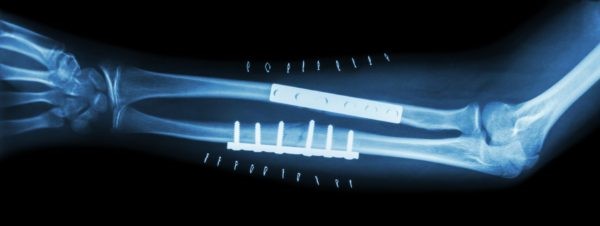
Post-Operative Care for Elbow Plates and Screws Installation
After undergoing the elbow plates and screws installation surgery, patients are guided on the necessary post-operative care and required rehabilitation to ensure proper recovery. Typically, patients aim to return to their pre-surgery activity levels, but it is important to note that the recovery process may take time. Some important instructions to follow post-surgery include:
- Following a healthy, balanced diet and adhering to the dietary regimen prescribed by the treating doctor.
- Committing to the necessary physical therapy sessions to improve joint flexibility and restore normal elbow movement.
- Taking prescribed medications and getting sufficient rest.
- Adhering to the required protective movements to avoid any strain on the joint.
- Gradually returning to daily activities and proceeding with the doctor’s approval.
- Keeping scheduled appointments for check-ups and follow-ups with the treating doctor to ensure there are no complications.
- Avoiding straining the affected and stabilized part of the joint until the healing of wounds and fractures is significantly better.
Elbow plates and screws installation is a complex surgical procedure. Therefore, it is important to consult a specialist regarding any issues that arise post-surgery and to ensure there are no complications. Adhering to the doctor’s post-operative instructions is a key factor in recovery and achieving good results. This surgery requires commitment to post-operative care instructions, including adequate rest, healthy nutrition, and protective behavior.

Rehabilitation after Elbow Joint Surgery
After undergoing elbow joint surgery, you will need a period of rehabilitation to enhance muscle strength and improve movement. The rehabilitation process after surgery will help relieve pain and improve elbow flexibility. The most important tips to follow during this period include:
- Engaging in exercises recommended by the physical therapist to enhance muscle strength and facilitate movement.
- Avoiding any activity that could lead to a recurrence of elbow injury.
- Maintaining a healthy diet rich in proteins and fibers to promote healing and reduce potential post-surgery inflammation.
- Being careful not to use the injured elbow for tasks that require effort.
- It is advised to consult with your doctor before starting any rehabilitation program.
It’s also important to remember that undergoing elbow joint replacement surgery requires a period of rest and proper care for recovery. Therefore, activity should be minimized, and the elbow should be handled carefully during the rehabilitation period. Additionally, maintaining the physical therapy sessions prescribed by the doctor is essential for facilitating and enhancing the healing process. Hence, pay attention to your body and follow your doctor’s instructions to expedite the recovery process.
Rehabilitation after Elbow Joint Surgery Duration of the Procedure for Plates and Screws Installation
The surgery for the installation of plates and screws in the elbow is a surgical procedure used to stabilize bones and joints in place after a fracture or injury. The recovery period after the operation is about 6 to 12 weeks, although some patients may need more time due to the bone regeneration process requiring a specific duration.
It is worth mentioning that most patients can move on the day following the surgery, making it one of the surgical procedures that do not require significant recovery and treatment time. Patients should follow their doctor’s instructions regarding physical exercises and proper nutrition to ensure a quick and healthy recovery.
Discover the modern and effective solution for elbow fractures with Dr. Amr Amal and the surgery for the installation of plates and screws in the elbow.

Complications of Elbow Joint Surgery
The procedure for installing a plate and screws in the elbow is typically performed to treat fractures or issues related to the joint. Although it is generally a successful operation, complications can occur in rare cases as a result of this surgery. These may include:
- Joint Inflammation: Inflammation in the elbow may occur after the surgery, especially if the wounds are not cleaned well. Regular patient follow-up is necessary to ensure there are no signs of joint infection. If you wish to learn about available solutions for treating joint inflammation, please read this article.
- Lack of Improvement: The patient may not experience sufficient improvement after the surgery, or if the damage to the elbow is too significant, an additional surgical procedure or long-term treatment may be required.
- Plate Slippage: The plate intended for installation in the elbow may slip, potentially hindering the patient’s recovery process.
- Bleeding in the Affected Area: The procedure for installing plates and screws involves making an open wound in the affected area, which could lead to post-surgical bleeding.
It is crucial to have a qualified surgeon with a good reputation in this field to avoid a significant number of post-operative complications, which could be harmful to the patient and delay the healing process.
Damages of Plates and Screws
The process of installing plates and screws to treat fractures in the elbow comes with some risks. The installation procedure may lead to blood accumulation in the affected area or fluid buildup around the fracture, resulting in swelling and increased pain. The patient may also experience numbness in the extremities or weakness in the hand after the fixation process.
Some doctors might recommend the removal of the plate and screw when they consider it unnecessary after a period of treatment. This option varies from patient to patient and is not necessarily performed in all cases. Every experience is unique, and you should talk to your doctor to understand the risks of the procedure and the best solution for your specific case.
However, the damages from installing plates and screws are considered rare and can be avoided by professional doctors. After recovery, the patient should follow the correct instructions and adhere to medical exercises to strengthen the elbow muscles. Generally, if the fracture is successfully fixed, the treatment with plates and screws can return the patient to their normal life. Therefore, you should talk to your doctor with all precaution and take important advice to provide the best care for yourself.

Do Plates and Screws Cause Pain?
“Are you suffering from complex bone fractures? Get ready for a rapid and precise recovery with Dr. Amr Amal’s plates and screws installation procedures.”
Patients are usually concerned about the pain they might feel after undergoing a procedure to install plates and screws in the elbow. Many wonder if this procedure is a direct cause of pain. Clearly, the answer to this question depends on each individual case and cannot be answered with a simple yes or no without considering some important information. In general, if the plates and screws are properly installed and the patient is given the necessary painkillers, there is no reason to worry.
However, complications can occur, including recurring pain, depending on several factors such as the nature of the fracture, the type of plates, the type of screws, the length of the surgical procedure, and the surgeon’s experience. If the patient feels any pain after the procedure, they should visit an orthopedic surgeon for the necessary care. Pain can last from two to three weeks; if there is pain, it is advised to consult with your orthopedic surgeon.
Is the Procedure of Plates and Screws Difficult?
Installing plates and screws in the elbow is a surgical procedure performed in a hospital under the care of a specialist in this field. It requires full body anesthesia, so it can be considered difficult and requires a specific recovery plan. Patients need rest, special care, a balanced diet, and continuous medical monitoring.
Many people note that the installation of plates and screws is not difficult as they are under anesthesia and do not feel any pain during the procedure. After the operation, the patient undergoes a long period of recovery and special care until they can walk normally again. This type of treatment is considered successfully treatable, whether the fractures are minor or severe. The surgeon you talk to will usually not need to install plates and screws unless the fractures are significantly severe.

Cost of Installing a Plate and Screws in the Elbow
When a person experiences a fracture in the elbow, the first step they should take is to consult a specialist doctor. If they are diagnosed as needing surgery, they should inquire about the cost of installing a plate and screws in the elbow. The price of the procedure can be influenced by multiple factors, such as the time required for the surgery and the type of specialist surgeon required.
The cost of installing a plate and screws in the elbow may range from 40,000 to 80,000 Egyptian pounds, and the price may be adjusted according to the medical condition and accompanying factors. Of course, it is crucial for the patient to ensure they choose the best doctors and surgeons who are experienced in these procedures to guarantee the operation’s safety and success. If you wish to learn more about the cost of elbow joint replacement surgery, click here.
Is the Plate and Screw Procedure Dangerous?
It is important to know that the plate and screw procedure is a surgical method used to stabilize broken or deformed bones using metal pieces called plates and screws. This procedure aims to accelerate the healing process of the fracture and improve the function of the affected limb. Generally, the plate and screw procedure is not dangerous, but it requires some precautions, medical follow-up, and potential complications that may occur after the surgery, such as:
- Inflammation or infection at the wound or bone site
- Slippage, breakage, or wear of the plates and screws
- Allergic reaction or rejection of the metal materials
- Weakness or atrophy in the muscles or tendons
- Deformation or misalignment of the bones
- Delay in fracture healing or non-union
Therefore, the patient must regularly consult their doctor and follow their advice regarding rehabilitation, nutrition, and rest. Patients should also avoid activities that increase pressure, movement, or friction on the plates and screws, such as lifting heavy weights, running, or walking long distances. In some cases, the doctor may advise removing the plates and screws after the fracture has healed if they are causing pain, irritation, or posing a risk to the patient’s health.

Can a Bone Plate Remain for Life Without Harm?
A bone plate is a metal piece used to stabilize broken or deformed bones. Typically, the plate is temporarily placed to help the bones heal correctly and is removed after a period. However, in some cases, the doctor may leave the plate in place if it does not cause any problems or pain for the patient. This does not mean that the plate will remain for life without causing any harm; complications such as:
- Inflammation or infection at the wound or bone site
- Slippage, breakage, or wear of the plate or screws
- Allergic reaction or rejection of the metal material
- Weakness or atrophy in the muscles or tendons
- Deformation or misalignment of the bones
- Delay in fracture healing or non-union
may occur. Therefore, it is advised to remove the plate if it causes any of these problems, or if the patient prefers it. Otherwise, it is fine to leave it in place if there are no complaints. However, the patient must regularly follow up with their doctor and adhere to proper nutrition, rehabilitation, and rest.
Installation of a Plate and Screws in the Thigh
The surgical procedure of installing a plate and screws in the thigh is used to stabilize broken bones using metal plates and screws to hold them in place. This procedure is used in cases of severe or unstable fractures, or those that affect the joints. Additionally, there are certain procedures and recommendations that must be followed before and after the surgery to ensure its success and expedite the bone healing process.
For more information about this procedure and its benefits, it is crucial to have clear communication with your orthopedic doctor and to ask for a detailed explanation of the procedure until it is successfully completed in the best possible condition. Therefore, we recommend Dr. Amr Amal’s Center for Orthopedic Surgeries for all kinds of conditions, as it aims to make the procedure much easier than expected and provides the best possible services.
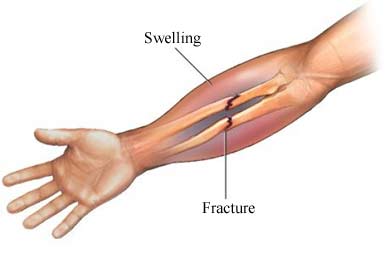
Healing Duration of Elbow Bones
Dear reader, you should know that the healing duration of bones varies depending on several factors, such as the type of fracture, age, nutrition, smoking, and chronic diseases. Generally, bones take 6 to 12 weeks to fully heal, but areas that are difficult to heal may take longer. The bone healing process can be divided into three stages: the inflammation stage, the repair stage, and finally, the remodeling stage. In each stage, the body sends special cells to repair the broken bone and restore it to its normal shape. To accelerate the bone healing process, it is recommended to:
- Use splints or stabilizing devices to hold the broken bones in place during the healing process.
- Consume sufficient amounts of proteins and minerals, especially calcium and vitamin D.
- Avoid smoking, alcohol, and steroid medications.
- Engage in light exercises after consulting a doctor to improve blood circulation and flexibility.
- Use some herbs beneficial for bones, such as evening primrose, ginger, and green tea.
Elbow Joint Stabilization Surgery for Children
The elbow joint stabilization surgery is a surgical procedure in which screws, plates, or metal rods are used to fix broken or dislocated bones in the elbow joint. This surgery is utilized for treating severe fractures or complete dislocations of the elbow joint, which cannot be treated with casts or splinting. Children may need an elbow joint stabilization surgery in rare cases, such as:
- If the fracture is open or has caused damage to blood vessels and nerves.
- If the fracture is unstable or affects the movement of the joint.
- If there is a risk of deterioration, deformity, or arthritis in the future.
- If one of the forearm bones repeatedly dislocates from its position, which is known as a pulled elbow.
Additionally, elbow joint stabilization surgery requires general anesthesia, and it involves a surgical opening of the joint area, removal of any bone fragments, repositioning of the dislocated bones, repairing torn ligaments, and inserting screws, plates, or metal rods to fix the bones in place. Wound healing may take 10 to 14 days, and complete recovery can take from 6 to 12 weeks. After the surgery, some instructions must be followed, such as:
- Using clean and dry dressings to cover the wounds.
- Elevating the child’s arm above the level of their heart to reduce swelling.
- Giving the child painkillers as directed by the doctor.
- Avoiding sudden or painful joint movements.
- Wearing a splint or brace to protect the joint from impacts.
- Engaging in light exercises to increase the joint’s range of motion and muscle strength.

